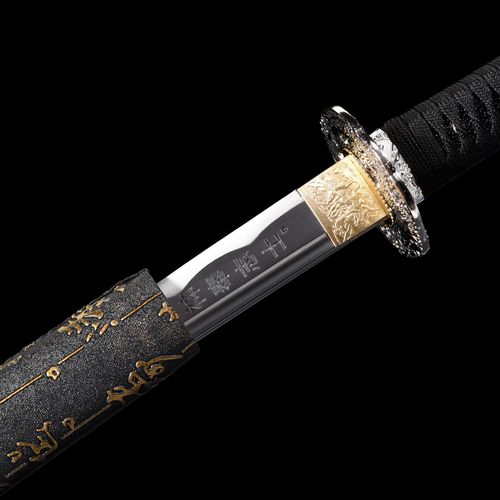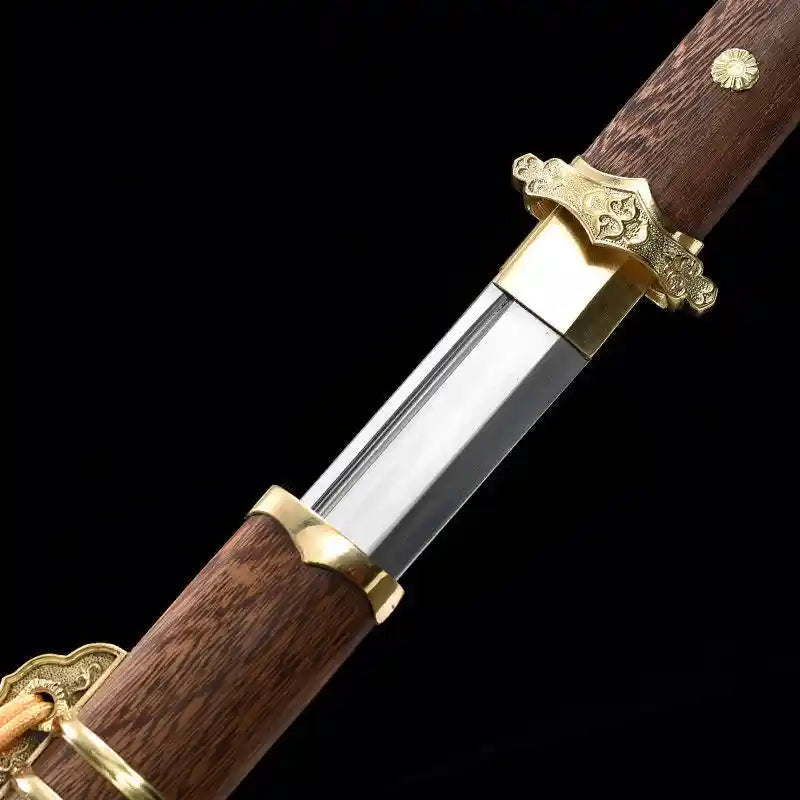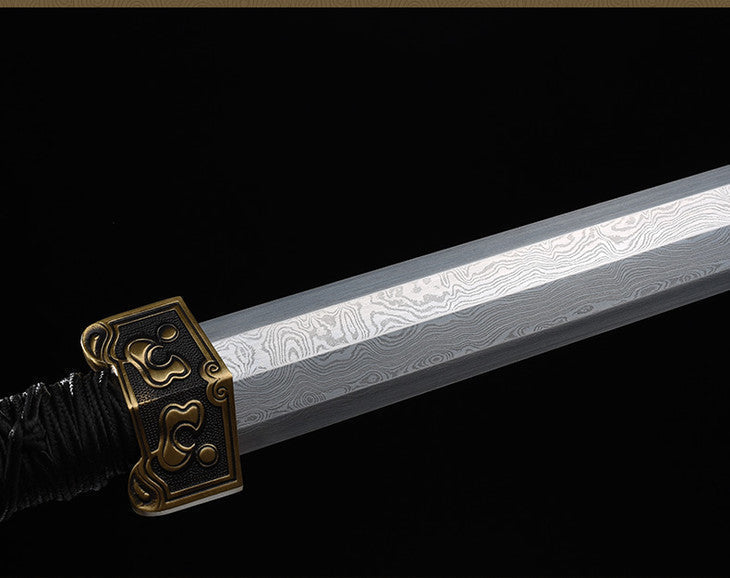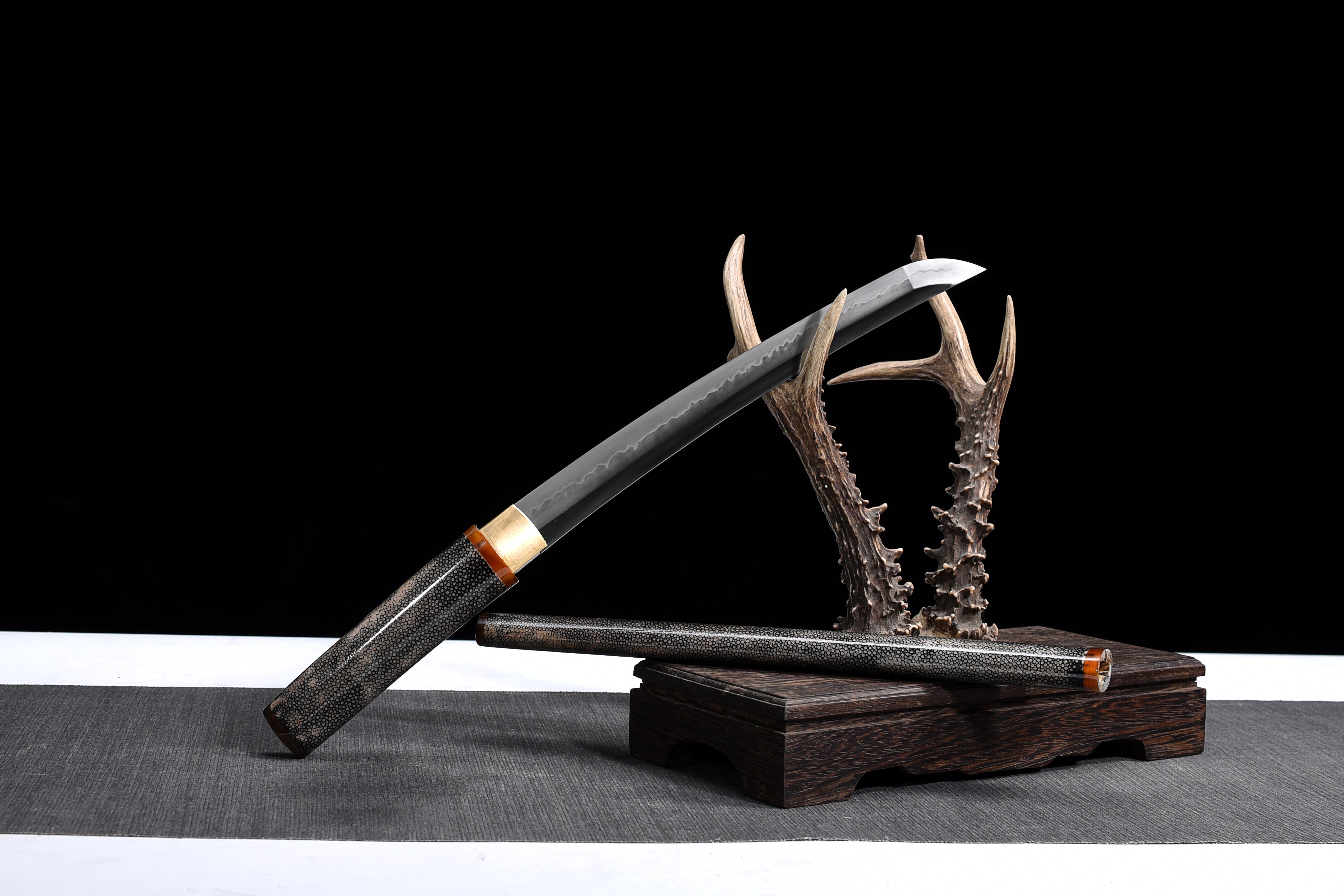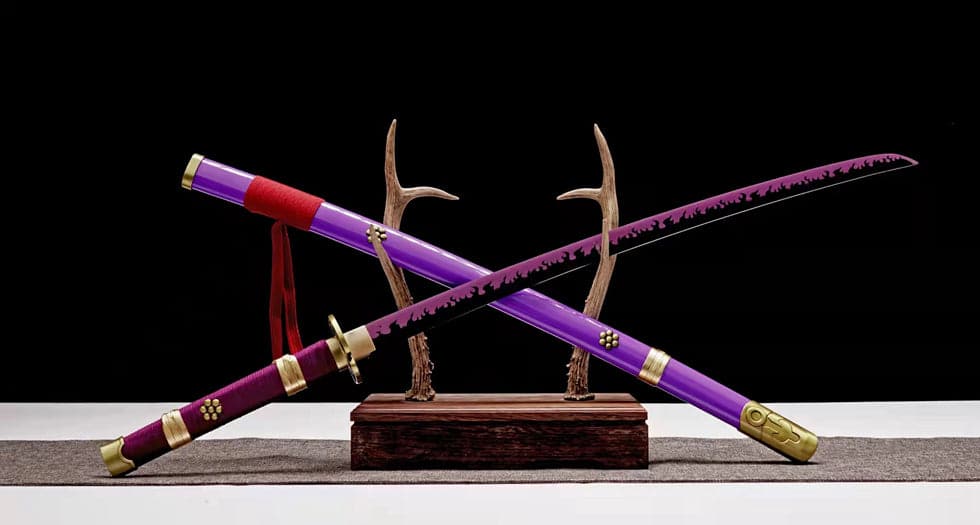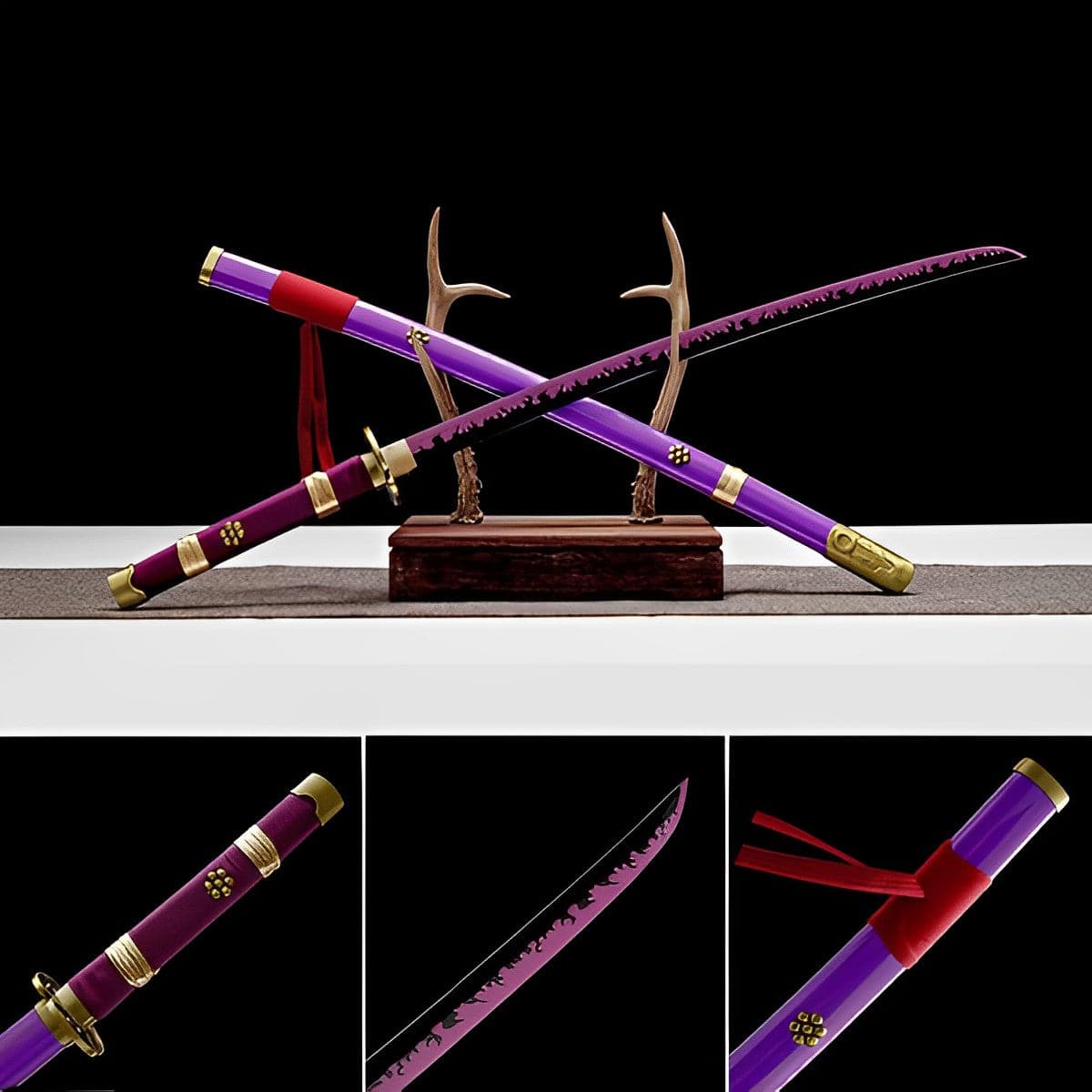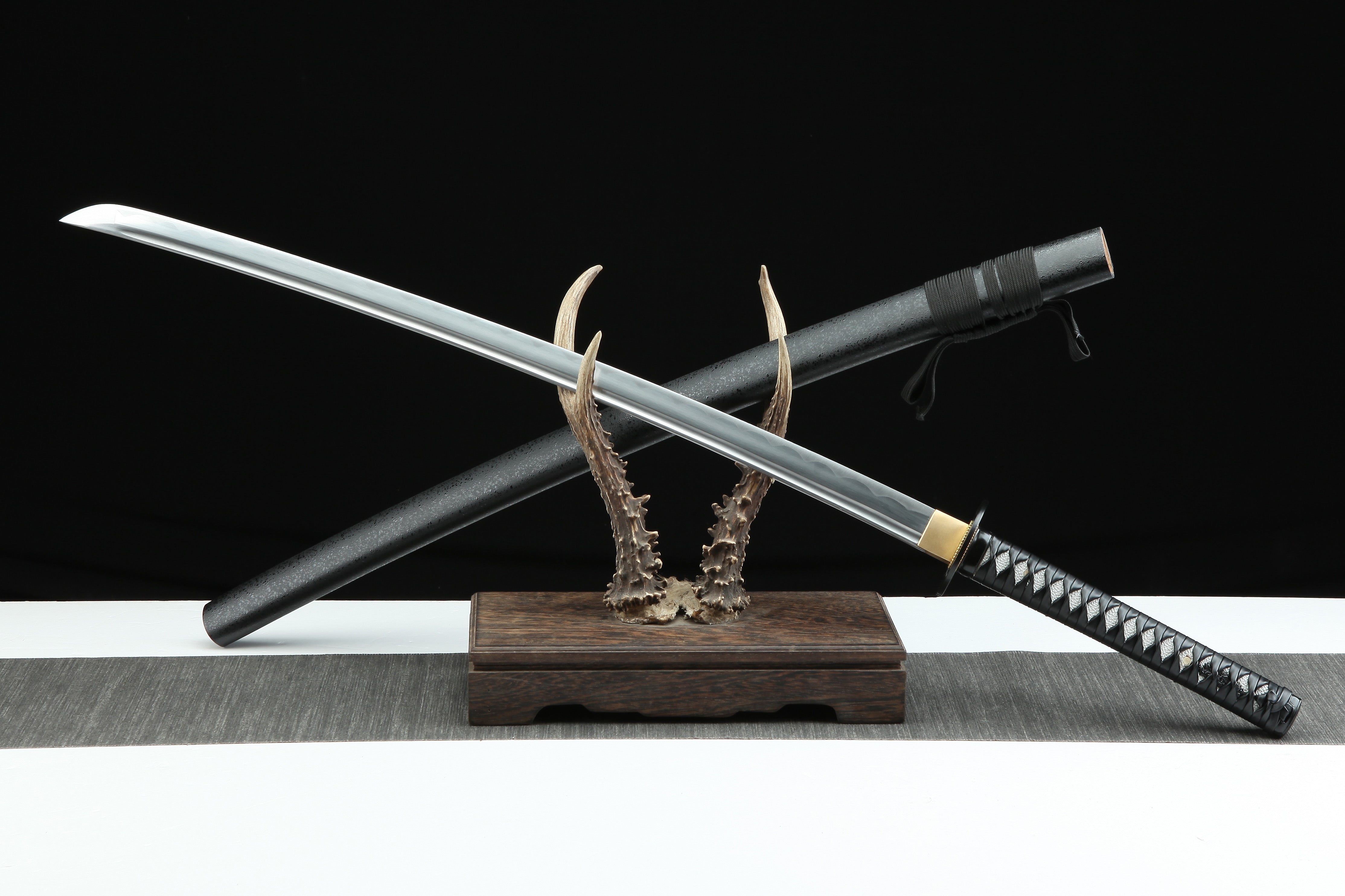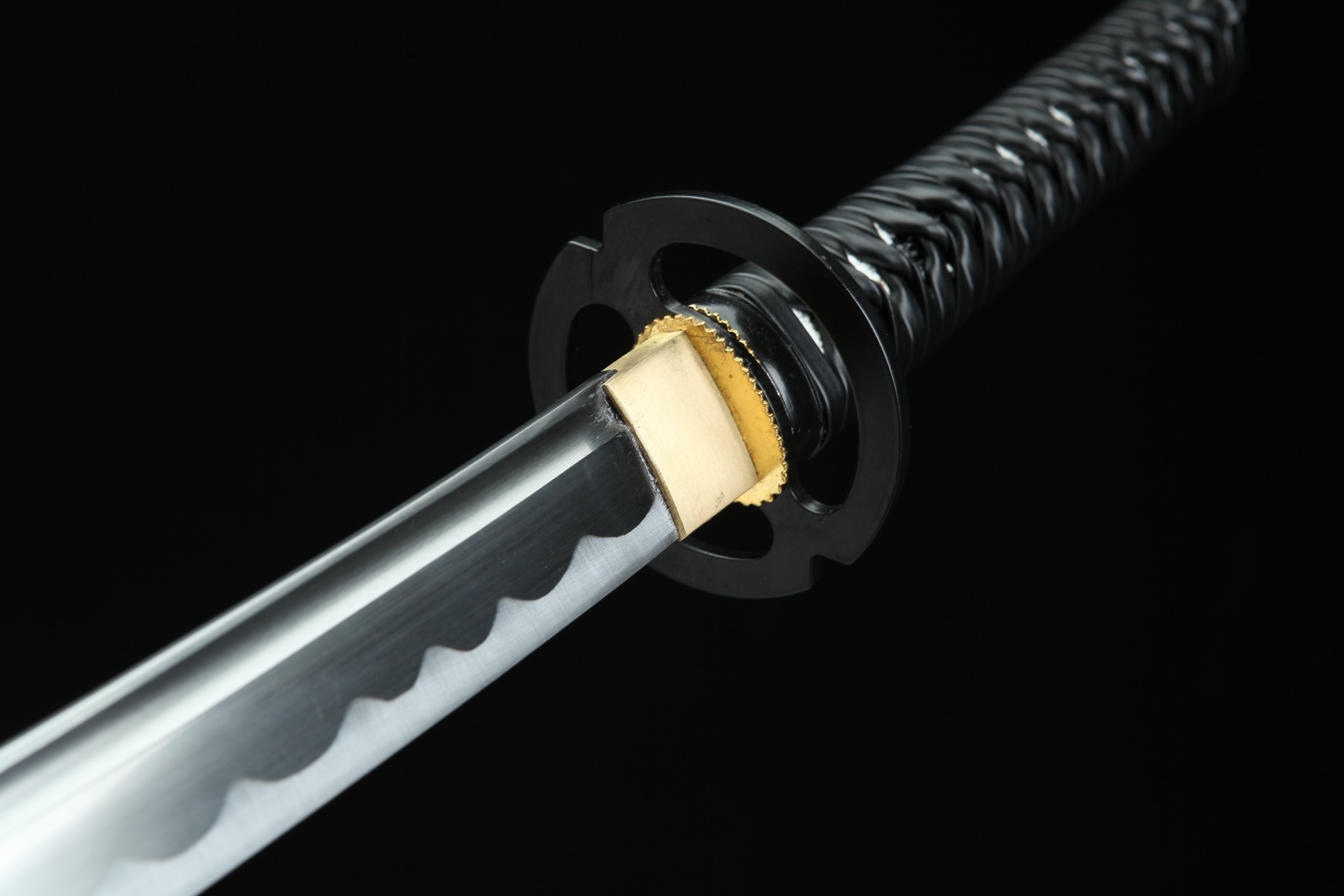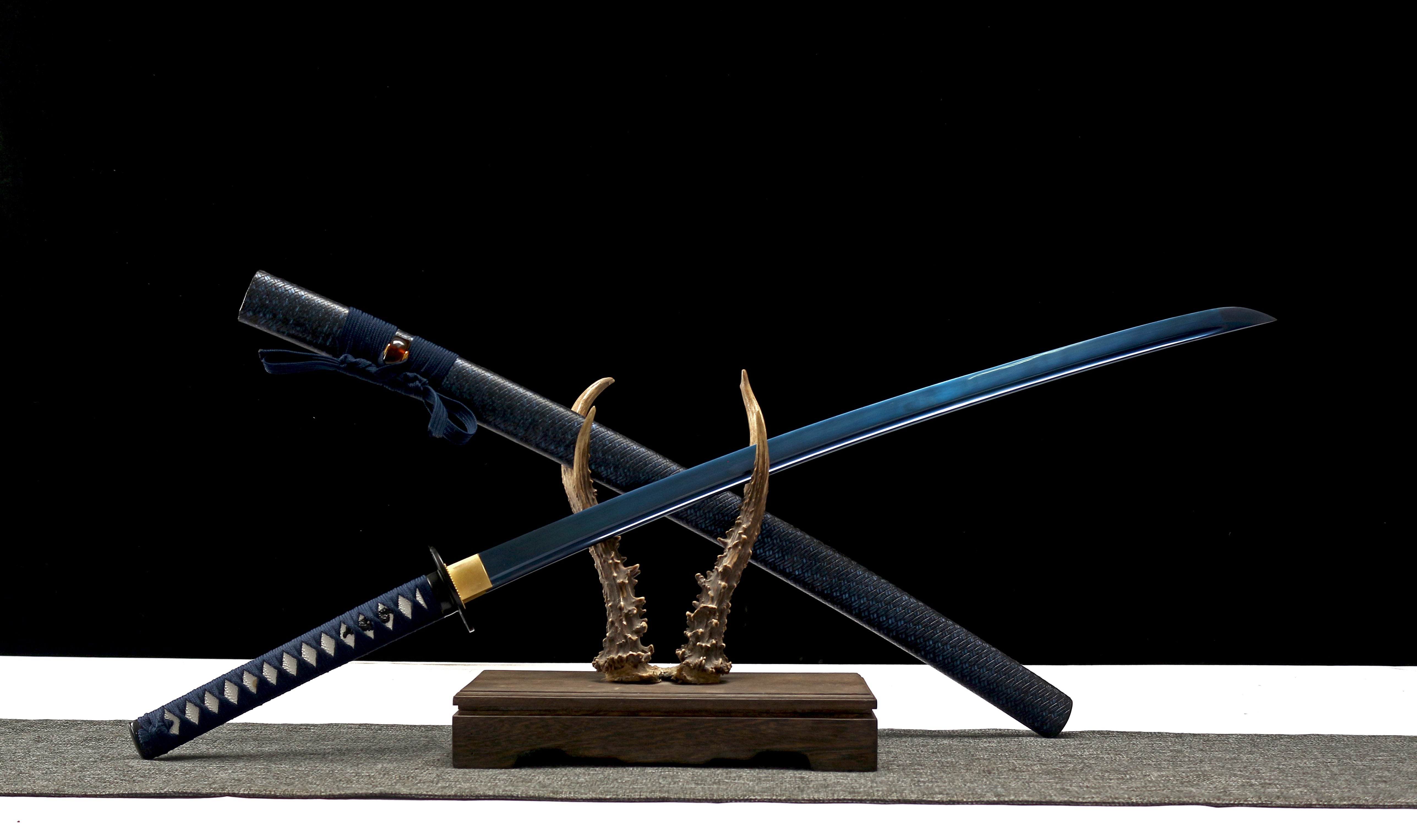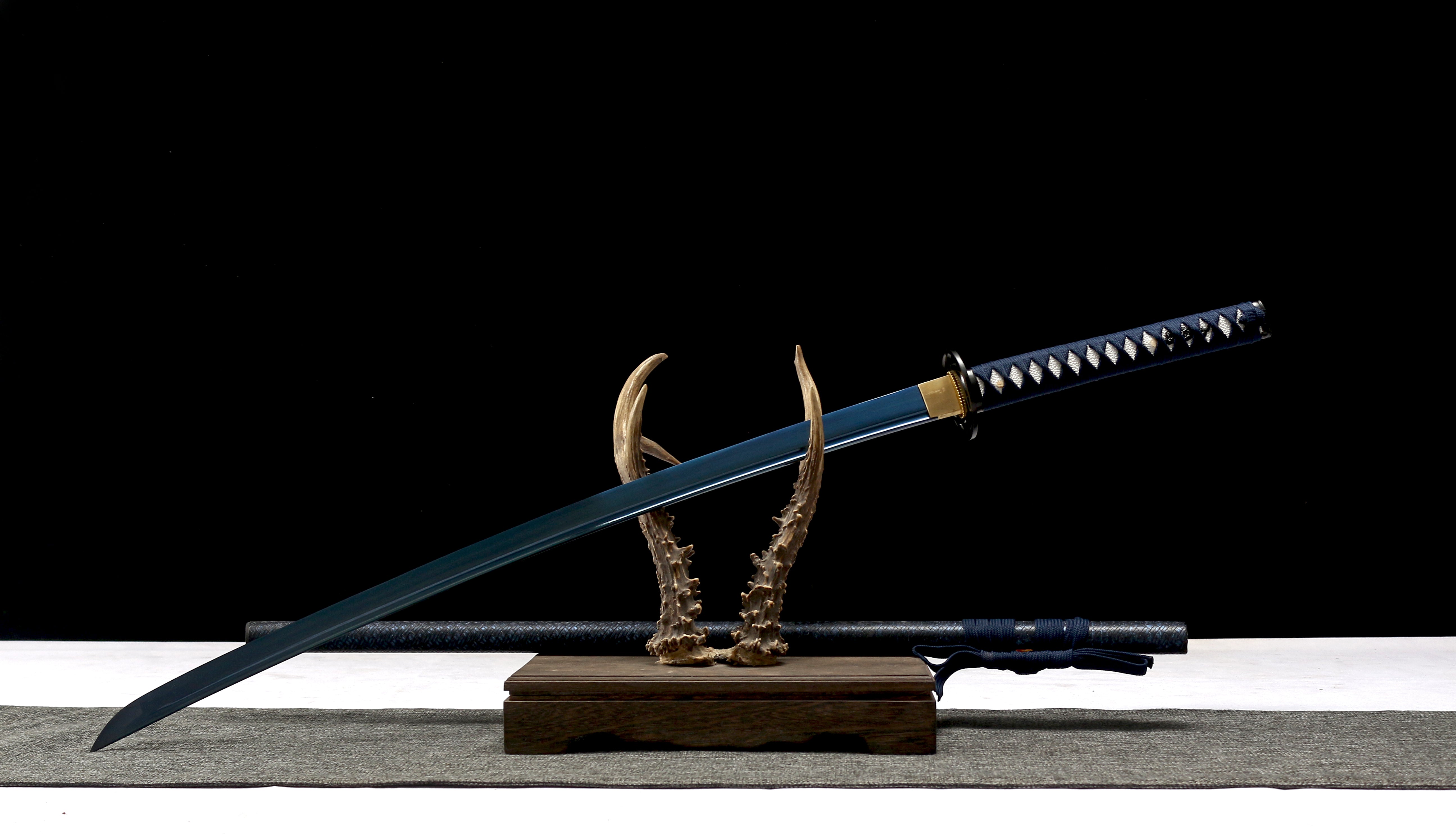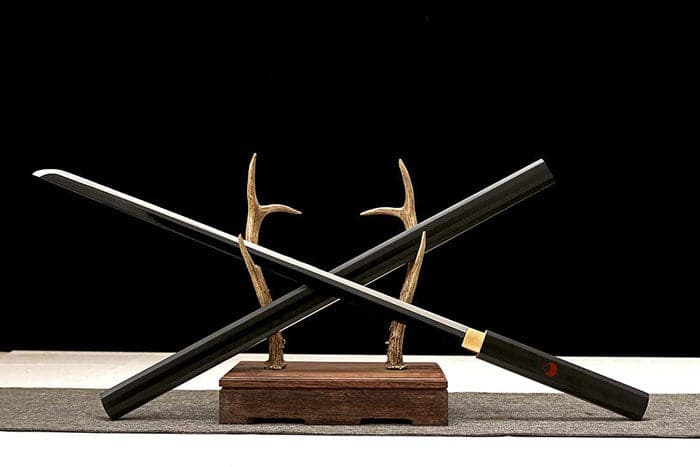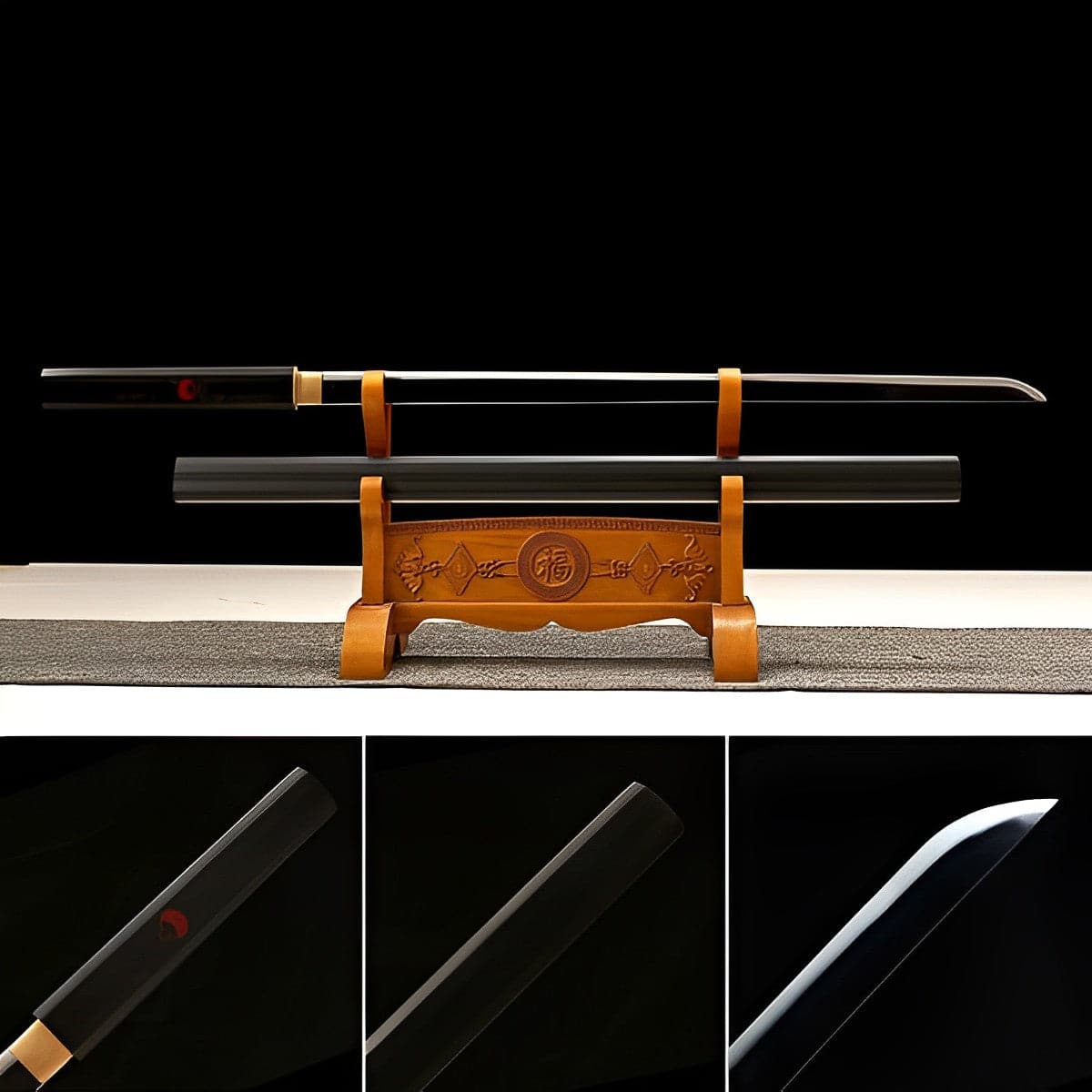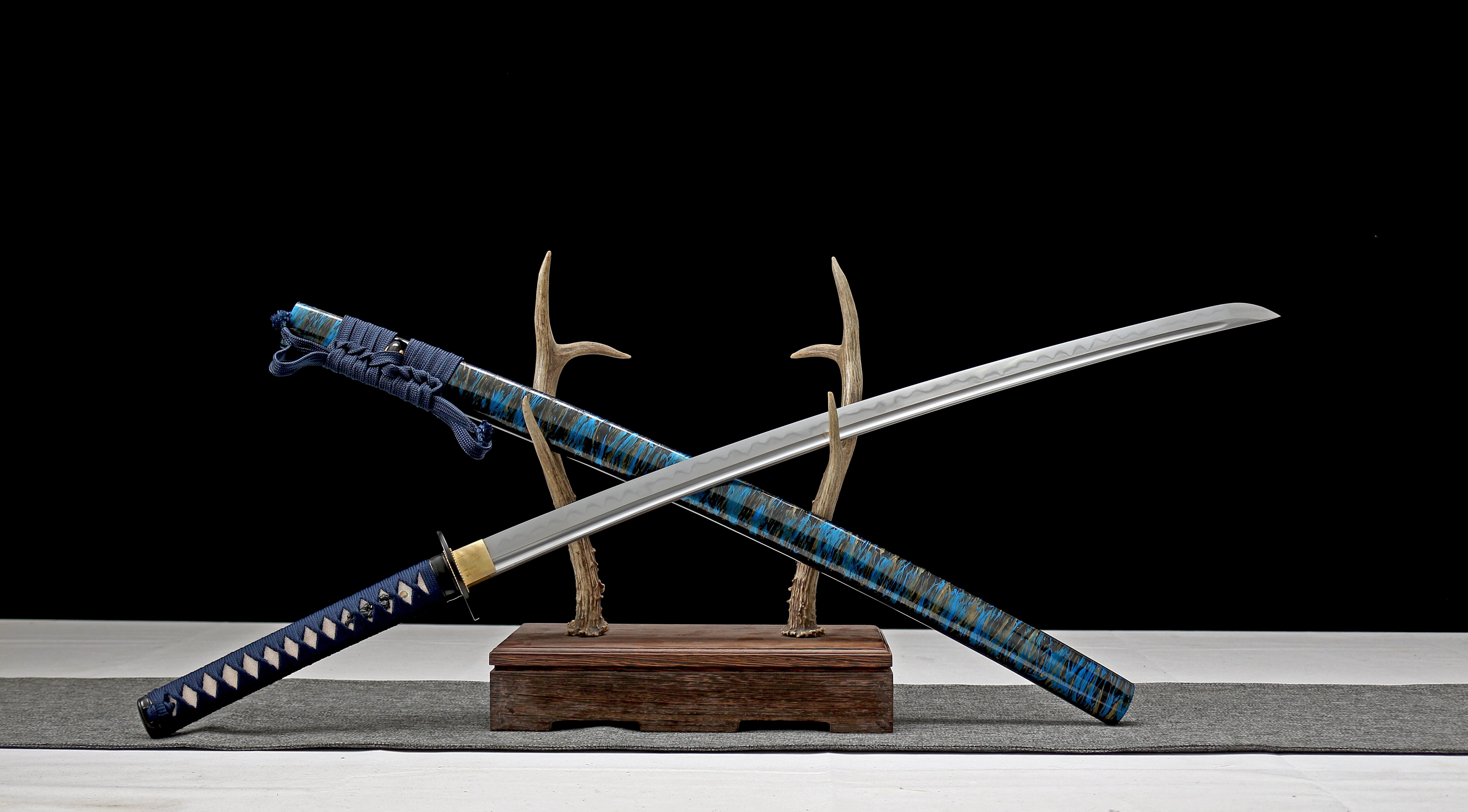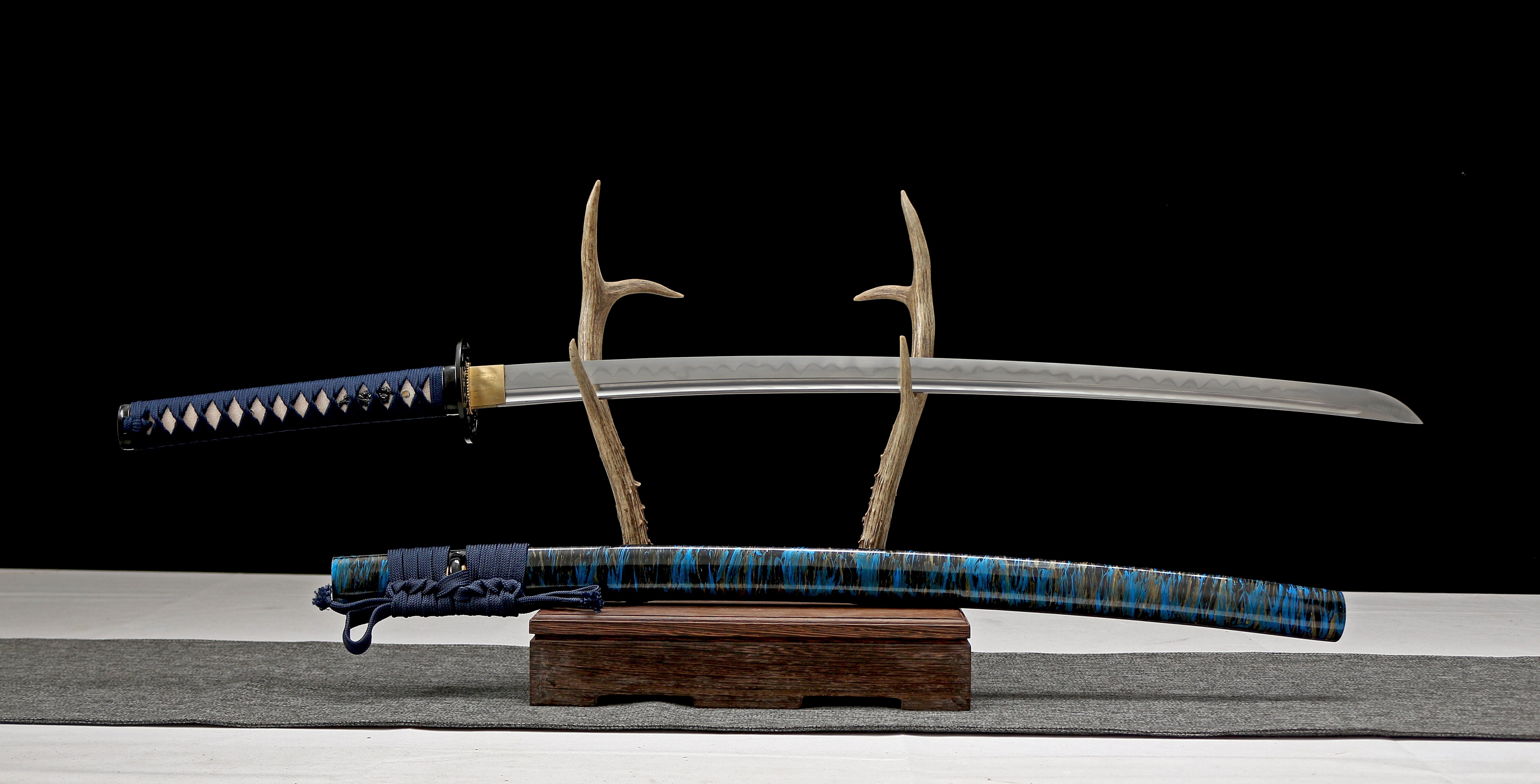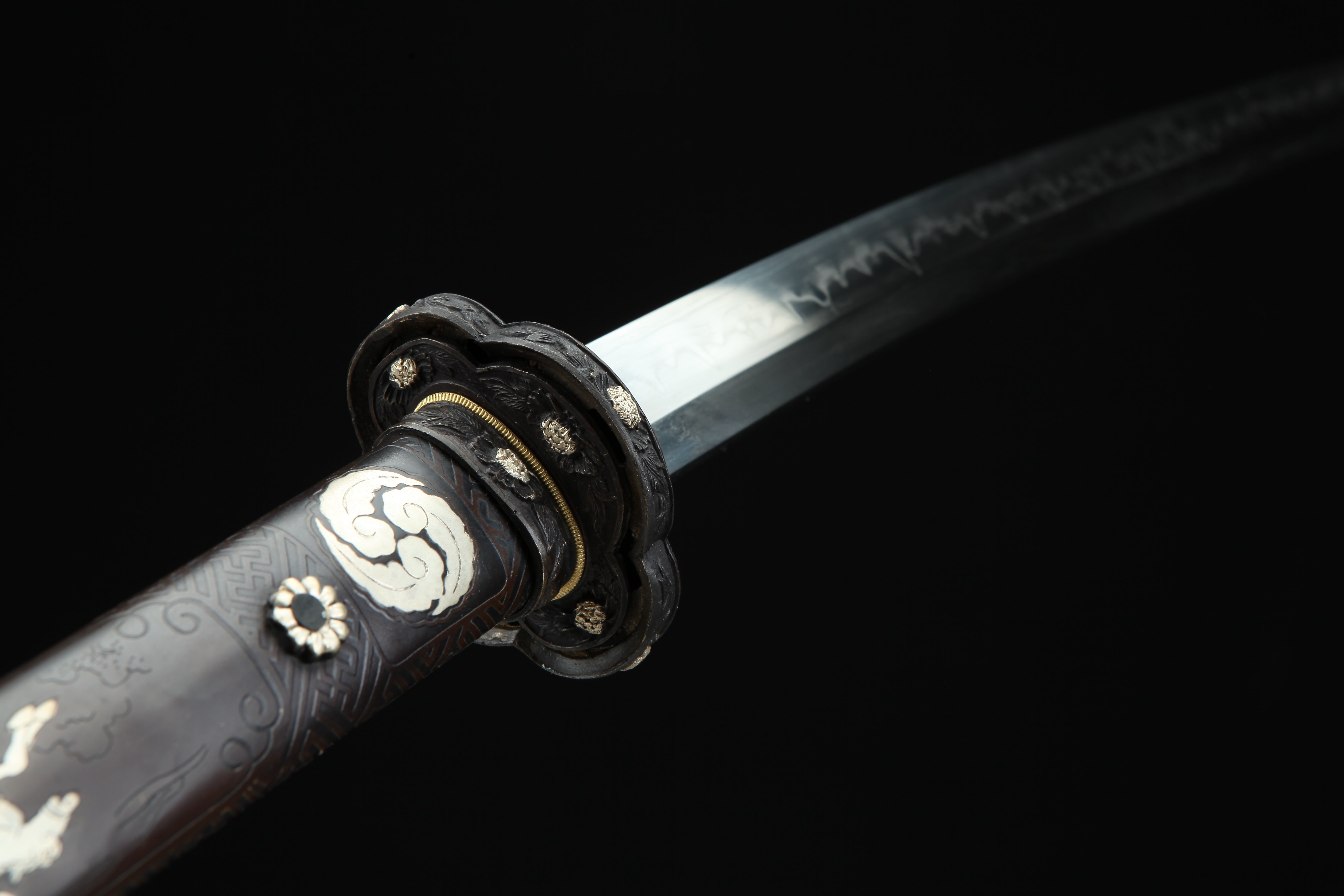
The Tachi: Japan’s First Legendary Sword and the Dawn of the Samurai
Introduction: The Curved Blade That Shaped a Warrior Class
Before the katana became Japan’s iconic sword, there was the tachi (太刀)—a longer, more dramatically curved blade designed for one purpose: to strike down enemies from horseback with godlike precision. Worn edge-down and suspended from the waist, the tachi was the ultimate status symbol of early samurai (bushi), combining lethal functionality with breathtaking artistry.
At LOONG BLADE, we preserve the legacy of these magnificent swords, offering historically accurate recreations for collectors and martial artists.
Chapter 1: Origins – The Birth of Japanese Swordsmithing (Heian Period, 794–1185)
Why the Curve?
- Mounted Combat: The tachi’s pronounced curvature (sori) allowed riders to deliver devastating slashes without losing momentum.
- Chinese & Korean Influence: Early straight swords (chokutō) evolved into curved blades as samurai warfare adapted to cavalry tactics.
The First Masterpieces
- Ko-Tachi (古太刀): Early Heian-period swords with gentle curves, often over 80 cm long.
- Signature Feature: Worn suspended from the belt, edge-down—unlike the later katana, which was thrust through the obi edge-up.
Chapter 2: Golden Age – The Tachi in the Kamakura Period (1185–1333)
The Pinnacle of Craftsmanship
The Kamakura era produced Japan’s most revered tachi, forged by legendary smiths:
- Masamune: The "God of Swordsmiths" created tachi with mesmerizing nie (crystallized steel) patterns.
- Yoshimitsu: His blades were famed for choji-midare hamon (clove-shaped temper lines).
Battlefield Dominance
- Gempei War (1180–1185): Tachi-wielding samurai decided the fate of Japan.
- Mongol Invasions (1274, 1281): Japanese cavalry used tachi to cut through Mongol armor.
Fun Fact: Many tachi were later shortened into katana during the peaceful Edo period.
Chapter 3: Design & Aesthetics – What Makes a True Tachi?
Key Features
| Part | Tachi Style | Katana Comparison |
|---|---|---|
| Curvature | Deep (2.5–3.5 cm), for horseback | Moderate (1.5–2 cm) |
| Length | 75–100 cm | 60–73 cm |
| Mounting | Suspended, edge-down (koshirae) | Thrust through obi, edge-up |
| Hamon | Often notare (wavy) or gunome (zigzag) | More varied patterns |
Artistic Embellishments
- Lacquered scabbards: Adorned with gold maki-e designs.
- Elaborate hilts: Wrapped in silk or leather, with ornate tsuba (guards).
Chapter 4: The Decline & Legacy of the Tachi
Why Did It Fade?
- Shift to Infantry: The Muromachi period (1336–1573) favored shorter katana for foot combat.
- Edo Period (1603–1868): Peace made long cavalry swords impractical.
Surviving Treasures
- National Treasures: Many tachi, like Dojigiri Yasutsuna, are preserved in Japanese museums.
- Martial Arts: Some kenjutsu schools still practice tachi techniques.
Chapter 5: LOONG BLADE’s Tachi Collection – Reviving History
We honor the tachi’s legacy with:
✔️ Historically accurate forging (tamahagane steel, clay tempering)
✔️ Mounted combat-ready curvature
✔️ Custom fittings (gold lacquer, silk ito wrap)
Tested for Modern Use:
⚔️ Cuts through tatami mats with the same efficiency as ancient battlefields.
🏇 Balanced for horseback cutting demonstrations.
Conclusion: The Sword That Made the Samurai
The tachi was more than a weapon—it was:
- A symbol of aristocratic warfare
- A masterpiece of metallurgy
- The foundation of the katana’s evolution

